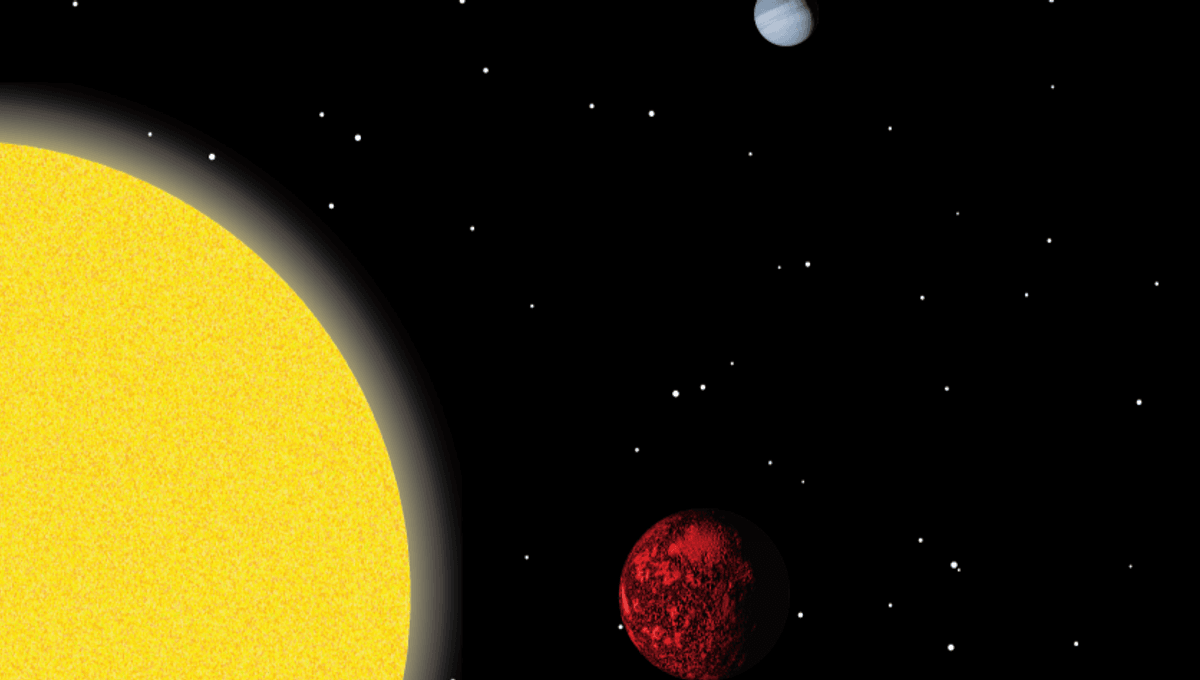
An international team of astronomers has detected a record-breaking planet orbiting a Sun-like star. The system is called K2-360 and it has two known planets K2-360 b and K2-360 c. The innermost orbits the star in just 21 hours. It is an ultra-short period super-Earth, rocky but larger than our planet. That is not all; data indicate that it is the densest such planet we know of.
K2-360 b has a radius just shy of 1.6 times that of Earth, giving it a volume four times as large. Its mass, though, is 7.7 times that of our planets, making its density almost twice as much as our little Earth. It is as dense as lead.
“K2-360 b is truly remarkable – it’s as dense as lead, packing nearly 8 Earth masses into a ball only slightly larger than our planet,” lead author John Livingston, from the Astrobiology Center in Tokyo, Japan, said in a statement. “This makes it the densest known planet among the class of ‘ultra-short period’ planets [with precise parameters], which orbit their stars in less than a day.”
K2-360 b is a rocky world, likely covered in an ocean of magma due to its very close proximity to its star. However, it might not have always been like that. It is possible that it used to have a thick gassy atmosphere like Uranus or Neptune, and moved inward. The star would have then eroded the atmosphere leaving the rocky planet behind.
“This planet gives us a glimpse into the possible fate of some close-in worlds, where only the dense, rocky cores remain after billions of years of evolution,” added co-author Davide Gandolfi from the University of Turin.
There is a second planet in the system K2-360 c. It doesn’t pass in front of the star (unlike its companion) from our point of view. This indicates that their respective orbits are skewed. Looking at the changes in starlight, astronomers have estimated that it is 15 times more massive than Earth and orbits every 9.8 days. And it might be responsible for what happened to its smaller sibling.
“Our dynamical models indicate that K2-360 c could have pushed the inner planet into its current tight orbit through a process called high-eccentricity migration,” explained co-author Alessandro Trani from the Niels Bohr Institute. “This involves gravitational interactions that first make the inner planet’s orbit very elliptical, before tidal forces gradually circularize it close to the star. Alternatively, tidal circularization could have been induced by the spin-axial tilt of the planet.”
To explain its remarkable density, the team estimates that the planet is rich in iron located in an enormous core. This iron core is believed to account for 48 percent of the planet’s mass – that’s almost four Earth’s worth of iron.
“Our interior structure models indicate that K2-360 b probably has a substantial iron core surrounded by a rocky mantle,” stated co-author Mahesh Herath, a PhD candidate at McGill University. “Its surface may be covered in magma due to the intense heat it receives from its star. Understanding planets like this helps us piece together how terrestrial planets form and evolve under different conditions throughout the galaxy.”
The study is published in Scientific Reports.
Source Link: Densest Ultra-Short Period Planet Discovered 750 Light-Years From Earth